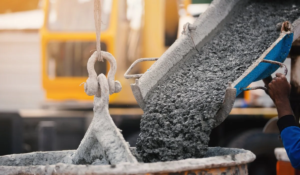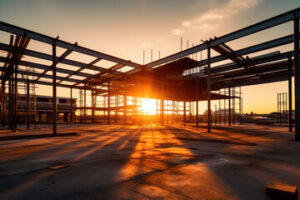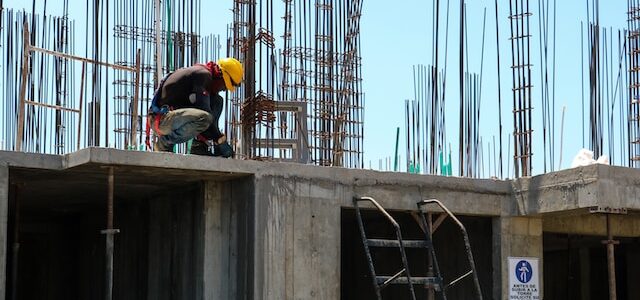Concrete repair requires careful evaluation of the structure in its deteriorated condition, determination of the cause, and selecting appropriate repair methods and materials. This includes a visual inspection, destructive and nondestructive testing, and a structural analysis of the deteriorated concrete structure.
Several cement-based repair materials can be used to fill cracks. However, they must bond well with the existing concrete and have low shrinkage. For more information, just click the Visit Website to proceed.

Cracks are a common problem with concrete surfaces and can be repaired in various ways. Choosing the right method depends on the cause and type of crack. For example, cracks caused by drying shrinkage can often be stabilized with a moisture-tolerant epoxy. However, if the cracking is due to continuing foundation settlement, more than a repair of this kind may be required.
Sometimes, a concrete crack repair expert can use steel rebar to strengthen the existing structure and prevent further cracking. The rebar is more workable than factual, making it easier to bend and stretch. It also has a high working strength, which helps compensate for concrete’s weaker compressive strength.
When repairing a concrete crack, cleaning the area thoroughly is important. This step is especially important if the crack is exposed to the elements, as particulate debris can act as a bond breaker. A pressure washer or detergent can help remove any dirt or other materials from the surface of the crack.
If the crack is very narrow, it’s a good idea to start by stuffing a foam backer rod into it. This creates a base for the repair material and helps to prevent the crack from reappearing after the concrete has dried. Once the rod is in place, apply the concrete crack filler according to the manufacturer’s instructions.
Wide cracks are more serious and should be repaired with routing, sealing, or a concrete patch product. Experts chisel the crack to widen it and shape it into an inverted “V” for better mechanical bonding. This allows the repair material to better expand and contract with the concrete, prolonging the life of the repair.
Another option for repairing larger cracks is stitching. This technique uses U-shaped metal bars of varying lengths to bridge the two sides of the crack and is particularly useful for long-running cracks. To prepare the crack for stitching, drill holes into the concrete on either side of the crack and then run the bar across the gap. The ends of the bars are then anchored in place with grout or epoxy.
Delamination in concrete occurs when the surface layer separates from the body of the concrete. Several factors, including poor-quality concrete, improper curing, and exposure to extreme weather conditions, can cause this. Concrete contamination can be repaired by removing the delaminated surface layer and cleaning and patching the underlying concrete. Some resurfacing products are specifically designed to bond with delaminated concrete and create a new surface.
The first step in repairing delamination is to identify the areas affected by it. This can be done by tapping or sounding the concrete. Blistering areas will make a hollow sound, while the weakened top layer of concrete may not be as loud. It is important to note that delamination can develop in different concrete areas, and there are no distinct patterns.
Once the delaminated areas have been identified, they must be removed. This can be accomplished through shot blasting, hydro demolition, or grinding. The underlying concrete should be cleaned thoroughly to ensure only sound concrete remains. This can be challenging but vital for a successful concrete repair.
Often, the underlying concrete will be contaminated with salts and other chemicals. The removal process can be more difficult if these have been used during construction. The contaminated concrete should be thoroughly cleaned before any further work is done. If the contaminated concrete is not removed properly, it could lead to further damage and delamination.
The most common cause of delamination in concrete is corrosion of reinforcing steel. Acidic chemicals, harsh weather conditions, or poor concreting practices can cause this. The corrosion of the steel will then expand, exert pressure, and break the concrete apart. It is important to minimize the use of acids and other chemicals in concrete to reduce the risk of corrosion.
Another way to prevent delamination is to ensure proper mix and placement techniques are used during construction. This includes the amount of water, air, and admixtures in the concrete. It is also important to avoid de-icing salts on concrete, as they can increase the likelihood of delamination.
Leaks in concrete can cause structural damage if not treated quickly. Water damage to concrete structures can lead to mold and mildew, rot, wood infestation, termite infestation, and concrete cracks. Leaks in concrete slabs can also result in costly property damage if the plumbing lines beneath them fail. If left untreated, a leaky concrete foundation can undermine the entire structure.
Concrete is very dense; water-related damage to concrete structures can often be difficult to spot. It is important to catch these problems as early as possible to minimize the damage and repair costs. Several things, including earthquake soil movement, tree roots, seismic settlement cracks, and improper waterproofing, can cause water damage to concrete. The most common culprits are leaking water lines.
Slab leaks in concrete are a serious problem that must be repaired immediately. Slab leaks can lead to water accumulation, corroded steel pipes, and weakened concrete that can undermine the foundation of a home or business. They can also be a fire hazard because they often allow for the spread of flames across a house or business.
Water leaks in concrete can be hard to detect and often go undetected for years, causing expensive structural damage. Some signs of a slab leak include noticing wet spots on the floor or carpeting, a sudden increase in your water bill and high water usage, or hearing loud banging sounds from the floor below.
The most common way to repair a slab leak is by digging a tunnel through the slab and putting in a new pipe. This method requires a professional plumber who knows how to locate the leak using different tools such as acoustic, sonic, and pressure tools and tracing equipment. Plumbers can also use fiber optic cameras to find hot and cold lines running through the slab. This is the least invasive method of repairing a slab leak but can still be costly and time-consuming.
Often, a concrete repair project involves repairing a small surface defect. This type of repair is usually less time-consuming than a larger area repair and consists of a skim coat, a thin layer of material that covers the defect. Using a trowel, the replacement concrete is spread across the defect to fill any small holes or voids and smooth over the entire surface. Then, the trowel is wiped off clean to leave a uniform and consistent finish. This type of repair is important because the appearance of a concrete product is very important. An unattractive or uneven concrete repair will hurt the overall look and performance of the product.
Larger surface defects may need to be repaired by sawing, chipping, or drilling. A qualified person should make these repairs and be supervised at all times. This is to prevent shoddy work, which can compromise the structural integrity of the concrete product. The resulting cracks should be filled with a standard repair material listed on the contractor’s standard repair procedure.
It is very important that the concrete repair product bond with the parent concrete. To do this, the concrete must be thoroughly clean of dirt and dust, especially around the area where the repair will occur. It is also vital that the repaired concrete be placed correctly to ensure it has a good chance of adhering to the existing concrete.
Another way to improve the quality of a concrete repair is by using a prefabricated, high-performance repair material that can achieve high early strength levels. This will help the repair last longer and provide a high-quality final product.
Repair materials’ infiltration and bonding properties are very important in determining their ability to penetrate concrete surface microcracks and pores and perform well during curing. The influence of diluents on the initial viscosity, dry film thickness, and infiltration capability of MMA-based concrete repair materials was investigated. The results showed that adding diluents significantly reduced the viscosity and dried film thickness of the repair materials, allowing them to easily infiltrate into the microcracks of concrete.

